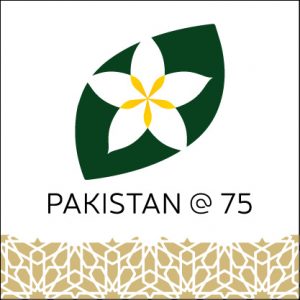 The publishing industry in Pakistan is a riveting story of success against the odds. In this post, eminent publisher Ameena Saiyid, who has spent her entire professional life as a publisher, reflects on the challenges that have confronted this fragile industry, and its continuing success despite lack of structural and government support, alongside other headwinds.
The publishing industry in Pakistan is a riveting story of success against the odds. In this post, eminent publisher Ameena Saiyid, who has spent her entire professional life as a publisher, reflects on the challenges that have confronted this fragile industry, and its continuing success despite lack of structural and government support, alongside other headwinds.
With the creation of India and Pakistan following the partition of the subcontinent in 1947, the hub of publishing and bookselling moved from Lahore to Delhi since these industries were owned mostly by Hindus. Hindu publishers and booksellers of Lahore left for India, a departure that created opportunities for the smaller Muslim publishers who took their place.
Textbook Boards and School Curricula
Publishing began to flourish in Pakistan in the 1950s, and some foreign publishers opened offices in Karachi and Lahore. Local publishers found a good market in government schools as well as the small number of private schools, publishing school textbooks. The high income from school textbooks in turn supported the publication of general, academic and children’s books. Unfortunately, in the 1960s, the government took the disastrous step of creating Textbook Boards and brought the publication of school textbooks for government schools under the exclusive control of provincial Textbook Boards. This had a significant negative impact on the emerging publishing industry and put an end to competition, innovation, marketing and promotional activities which create a culture of buying books, reading, and creating and raising the profile of writers. It also led to a decline in publishing standards that were, until then, improving because of competition among private publishers. Consequently, the state education system began crumbling. In the 1950s, the quality of government schools had been good, and several later luminaries traced their education to government schools in this decade. But in due course, and very sadly, the falling standards of textbooks, their chronic non-availability, the absence of school and public libraries, good quality children’s books and supplementary material (among other factors) led to a collapse of the state education system. This in turn stunted new and creative publishers whose businesses were now defined by more printers or contracted publishers of the Textbook Boards.
It is not easy to understand why the government of the time made (and subsequent governments strengthened) a decision that had such a detrimental impact on publishing and education. Surely they knew that a nation could be empowered only when its population was educated and well-read. Was it perhaps a perpetuation of the feudal mindset among the politicians and bureaucracy that did not want an empowered people who could ask questions and challenge official policies or vote independently?
Private publishers were left with only a small market amongst private schools, a situation that worsened when the government of Zulfiqar Ali Bhutto (1971–77) nationalised private schools in 1972. Fortunately, that nationalisation was reversed towards the end of the 1970s. The poor quality of government schools, the reversal of the nationalisation process and the emergence and growth of a middle class that demanded good quality education for their children led to a rapid expansion of private schools from the late 1970s onwards.
Private Schools and New Books
Many educationists and entrepreneurs established private English medium schools, and parents rushed to admit their children to these schools. These new private schools were free to use books of their choice which created great opportunities for publishers, leading once again to the publication of high quality books in a competitive marketplace in Pakistan. And once again, the profits from school textbooks enabled publishers to commission and publish books on a variety of genres with a strong sense of innovation, inventiveness, art, adaptability, determination and motivation.
This golden period of publishing lasted several decades though it had its challenges, the major one being the piracy of high-end publications at cheaper price. The growing demand for books and the weak copyright laws and even weaker enforcement combined with a Robin Hood mindset that defended book piracy on the flawed grounds that it made books cheaper became the bane of publishers who struggled and spent large funds on raising awareness against piracy, lobbying the government and carrying out police-assisted raids. At their best, they could succeed in reducing it but it continued raising its ugly head. Much energy had to be spent on getting around red tape and protecting copyright. To no avail would I shout from the rooftops that piracy did not lower but in fact raise the prices of books because piracy meant that publishers printed fewer copies, and had to increase the price to recover their costs (since the publishers could not benefit from the increased sales of their pirated titles at substantially cheaper prices).

Urdu Bazaar in Lahore is the main book market of publishers and booksellers which caters to almost the entire country except Sindh and Balochistan. Photo © Mohammad Zubair; used with permission by the author.
Nonetheless, publishing grew and flourished and tenacious publishers stood their ground on controlling piracy. For serious publishers with determination, imagination and perseverance, the field was wide open. They made the effort of growing their business and bringing the horse to water and making the water irresistible.
Single National Curriculum
Another great setback that jolted the publishing industry was the Single National Curriculum (SNC) announced and enforced across Pakistan (except in the province of Sindh) from 2020 onwards. According to SNC, no book, whether a textbook or supplementary reader, could be introduced in any school, public or private, without obtaining a No Objection Certificate (NOC) from the respective provincial Textbook Board. Getting an NOC was a complicated, involved, expensive and long-drawn-out process requiring reviews and approvals at multiple levels and given only when a book had been mutilated by the relevant Review Committees with the power to issue NOCs. This problem continues to fester. Sindh was the only progressive province that rejected the SNC and publishers retained their autonomy to publish books as they thought best and in response to market demand and requirements.
The importance of libraries to publishing cannot be underestimated. Students and other readers need libraries so that they are not forced to buy every book they read, and publishers get an assured library market for their books. Sadly, Pakistan does not have a nationwide network of public libraries on which the book industry, and indeed the habit of reading, are so dependent across the world.
In 1947, Pakistan, a multi-lingual and multi-ethnic state, inherited a rich literary tradition. It had authors who excelled in their genre and were revered in the subcontinent. There were poets like Faiz Ahmed Faiz and Shaikh Ayaz, fiction writers like Saadat Hasan Manto, Khadija Mastur, Khalida Husain and my aunt Qurat-ul Ain Hyder (who lived in Pakistan for some years), and journalists like Mazhar Ali Khan, I. H. Burney, Razia Bhatti and Zamir Niazi. The state hardly let them subsist on the margins. Pakistan needs to raise the profile of its authors and give them a place in the sun. Fortunately, with the advent of Literary Festivals which have become a movement in Pakistan where authors are honoured with prizes and awards, and which have become regular public platforms for authors to interact directly with audiences, the situation for publishers, authors and readers is improving.
*
Publishers and authors are the servants of civilisation. They hold a mirror to society. They are not treacherous or unpatriotic as has often been misinterpreted by the powers-that-be. They are the conscience of the nation and must not be coerced to conform and compromise on their intellectual stand. They need to be recognised, supported and exalted.
*
The views expressed here are those of the author and not of the ‘South Asia @ LSE’ blog, the LSE South Asia Centre or the London School of Economics and Political Science.
Banner image © Mohammad Zubair, ‘Urdu Bazaar, Lahore’, 2022; used with permission by the author.
The ‘Pakistan @ 75’ logo is copyrighted by the LSE South Asia Centre, and may not be used by anyone for any purpose. It shows the national flower of Pakistan, Jasmine (Jasminum officinale), framed in a filigree design adapted from Islamic architecture. The logo has been designed by Oroon Das.








OBE !
Why would the Empire award such a title to a national patriot, but not a colonial agent ?
Exactly what better standards has private education achieved, except making education expensive and PR driven ?
What have those Literary Festivals done for the masses, besides feed the elite from Western donations ? Where is the accounting for those NGOs?